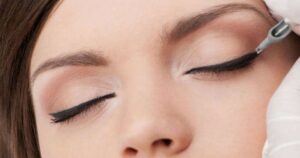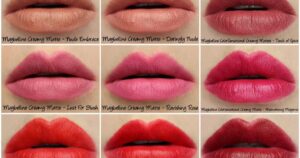curly hair doesn’t actually grow slower than straight hair. The perception may arise from the fact that curly hair tends to coil, making its length less apparent. Hair growth rates are generally consistent.
The secret of pleasant curls behind: Ever wondered what the saying does curly hair grows slowly? Is there any truth? Let’s expose the mystery of curly locks and discover the interesting science behind their growth rate proving that there is no limit to the speed of beauty!
Contrary to a common belief, curly hair doesn’t grow slower; its coiled nature often creates an optical illusion of reduced length. In reality, the growth rate remains consistent across hair types.
(Curly hair grow Slower)
Which hair type takes the longest to grow
The rate at which hair grows is relatively consistent across different hair types. On average hair grows about half an inch (1.25 cm) per month.
Factors such as genetics age and overall health play a more significant role in determining hair growth than the specific hair type.
While it may seem that certain hair types like curly or coil take longer to show visible length due to their natural texture the growth process itself remains unchanged.
Ultimately patience good hair care practices and a healthy lifestyle contribute to promoting optimal hair growth regardless of the hair type.
- Universal Growth Consistency
Exploring the steady growth pattern of hair across diverse types, highlighting the surprising uniformity in the rate of hair growth.
Monthly Milestone
Understanding the standard measure of hair growth, breaking down the average growth of half an inch (1.25 cm) per month and its implications for individuals with varying hair textures.
- Impact of Genetics on Growth
Investigating how genetic factors influence the consistent growth rate, shedding light on why some individuals may experience faster or slower hair growth.
- Environmental and Lifestyle Factors
Examining external elements that may influence hair growth, including environmental conditions, diet, and lifestyle choices, and their potential impact on the observed monthly growth rate.
- Managing Expectations
Providing insights into realistic expectations for hair growth and discussing factors that individuals can control to promote healthy hair growth within the established average.
Does hair grow faster straight or curly
The speed of hair growth is not determined by whether it’s straight or curly. Hair growth is primarily influenced by genetics and individual factors. It’s important to note that even White people have curly hair, and straight hair may appear to grow faster because its length is more noticeable due to the lack of curls.
Curly hair tends to coil, making its growth less apparent. However, both hair types share a similar growth rate with an average of about half an inch per month. Overall, the perception of growth speed is more about texture and visibility than the actual rate of growth.
Genetic Influence on Hair Growth
Exploring how genetics plays a pivotal role in determining the speed of hair growth.
Individual Factors Impacting Hair Growth
Understanding the various personal elements that contribute to the rate of hair growth in individuals.
Perception of Growth in Straight Hair
Discussing the visual aspects of straight hair that might create the illusion of faster growth compared to curly hair.
Unraveling the Curly Hair Myth
Dispelling the misconception that curly hair inherently grows slower, emphasizing the role of perception.
The Complexity of Hair Growth Dynamics
Summarizing the intricate relationship between hair type, genetics, and individual factors in the overall process of hair growth.
Does curly hair grow shorter?
There’s a common misconception that curly hair grows shorter, but that’s not true. Curly hair grows at the same rate as straight hair. The difference lies in the appearance the natural curls make the length less noticeable.
The unique structure of curly hair with twists and turns, can create an optical illusion of shorter strands. However, when measured the growth rate remains consistent. So, despite the visual trickery curly hair has the same potential for length as any other hair type. Embrace those curls and let them flourish!
Does curly hair stop growing at a certain length?
Curly hair doesn’t actually stop growing at a specific length despite the common misconception. Like all hair types it undergoes a cycle of growth rest and shedding. However due to the coiled structure it might appear to reach a plateau especially when curls form tight patterns.
Regular trims can help maintain healthy ends and prevent breakage giving the illusion of increased length. Genetics, overall health and care practices play significant roles in determining hair length. So, the notion that curly hair has a growth limit is a myth and proper care can promote continual growth.
Continuous Growth Cycle
- Curly hair, contrary to popular belief, undergoes a continuous cycle of growth, rest, and shedding similar to all other hair types.
Misconception of Plateau
- Despite the common misconception, curly hair doesn’t actually stop growing at a specific length. The coiled structure can create the illusion of a growth plateau, especially when curls form tight patterns.
Natural Growth Process
- Like other hair types, curly hair follows a natural growth process, but the unique curl pattern can make it challenging to visually perceive the lengthening over time.
Understanding Coiled Structure
- The coiled structure of curly hair can contribute to the misconception of limited growth. In reality, the curls may mask the actual length due to their compact and spring-like nature.
Recognizing Growth Potential
- It’s essential to recognize that, just like any other hair type, curly hair has the potential for continual growth, and proper care can support a healthy hair growth cycle.
When to diffuse curly hair
When to diffuse curly hair depends on your preference and routine. After washing gently scrunch in your preferred styling products. Ideally start diffusing when your hair is still damp not soaking wet. This helps enhance curls without excessive frizz.
Use a low heat setting to protect your hair and hold the diffuser at a slight distance to avoid disrupting the natural curl pattern.
Diffusing is great for adding volume and defining curls making it a go to technique for many curly hair enthusiasts. Experiment with timing to find what works best for your unique curls!
Preference and Routine
Tailoring the timing of diffusing curly hair depends on personal preference and daily hair care routines.
Product Application
Gently scrunch in your preferred styling products post-wash to establish a good foundation for defined curls.
Optimal Dampness
Initiate the diffusing process when your hair is still damp, not overly wet, to strike a balance that enhances curls while minimizing frizz.
Curl Enhancement
Diffusing while the hair is in a slightly damp state contributes to the enhancement of natural curls, bringing out their full potential.
Frizz Control
Starting the diffusing process with damp hair helps manage frizz, allowing for a controlled and defined curly hair outcome.
How to combat dryness and keep curly hair healthy?
To combat dryness and maintain healthy curls start by using a moisturizing shampoo and conditioner specifically designed for curly hair. Avoid washing your hair daily as it can strip away natural oils. Instead opt for a routine that includes regular deep conditioning treatments to nourish and hydrate your curls.
Gently detangle your hair with a wide-tooth comb while it’s wet to prevent breakage. Embrace the natural drying process and limit the use of heat styling tools. Apply a leave-in conditioner to keep your curls hydrated throughout the day. Finally, protect your curls at night by using a silk or satin pillowcase to minimize friction and frizz.
Curly hair grow Slower Choose the Right Products
Select a moisturizing shampoo and conditioner tailored for curly hair to combat dryness and enhance the health of your curls.

Limit Washing Frequency
Avoid washing your hair daily, as frequent washing can strip away natural oils, contributing to dryness. opt for a more balanced washing routine.

Deep Conditioning Ritual
Incorporate regular deep conditioning treatments into your hair care routine. These treatments provide essential nourishment and hydration to keep your curls healthy.
Hydration is Key
Prioritize products and routines that focus on hydrating your curls. Well-moisturized hair is less prone to dryness and frizz.
Mindful Hair Care Routine
Develop a thoughtful and consistent hair care routine that caters to the unique needs of curly hair. This includes using the right products, adjusting washing frequency, and incorporating deep conditioning for optimal results.
How long does it take for curly hair to grow shoulder length?
The time it takes for curly hair to reach shoulder length can vary from person to person. On average hair grows about half an inch per month. For curly hair the growth may seem slower due to the natural coiling and shrinkage.
It typically takes several months to a few years depending on factors like genetics hair care practices and overall health. Regular trims can help maintain a healthy appearance.
while proper moisturizing and minimal heat styling contribute to optimal growth. Patience and consistent care are key when aiming for shoulder-length curls.
Individual Variances in Hair Growth
Understanding why the time it takes for curly hair to reach shoulder length can differ for each person.
Average Monthly Hair Growth
Exploring the general growth rate of hair, which is approximately half an inch per month.
Curly Hair Challenges
Recognizing the unique characteristics of curly hair, where growth may appear slower due to natural coiling and shrinkage.
Factors Influencing Growth Perception
Examining various factors that can influence how fast or slow the growth of curly hair appears.
Patience in Curly Hair Journey
Emphasizing the importance of patience and proper care in achieving shoulder-length curly hair, despite perceived slower growth.
How to grow curly hair faster in 1 week?
Here’s a concise table summarizing tips for growing curly hair faster in one week:
| 1 | Balanced diet with hair-friendly vitamins. |
| 2 | Drink plenty of water to stay well-hydrated. |
| 3 | Apply a deep conditioning treatment for moisture. |
| 4 | Gently massage the scalp to stimulate blood flow. |
| 5 | Avoid heat styling tools; opt for protective hairstyles. |
| 6 | Ensure 7-9 hours of sleep for optimal hair health. |
| 7 | Use a leave-in conditioner to keep hair hydrated. |
FAQ’s
1. Do genetics play a role in the perceived speed of hair growth, especially for individuals with curly hair?
Genetics play a key role in the perceived speed of hair growth for individuals with curly hair, influencing factors like texture and overall health.
2. How does the coiled structure of curly hair impact its appearance in terms of length and growth perception?
The coiled structure of curly hair can create an optical illusion of reduced length, making growth less apparent than in straight hair.
3. Are there specific care practices or products that can help enhance the growth of curly hair and dispel the notion that it grows slower?
Consistent deep conditioning, a nutrient-rich diet, and gentle care can enhance curly hair growth, debunking the myth of slower growth.
Conclusion
In conclusion, the belief that curly hair grows slower than its straight counterpart is a common misconception rooted in visual perception. The coiled structure of curly hair, while a defining characteristic, can create the optical illusion of reduced length. Scientifically, there is no evidence to support the idea that curly hair inherently grows at a slower rate.
Hair growth is primarily influenced by genetic factors, overall health, and proper care. Understanding that the appearance of length in curly hair can be affected by its unique texture is crucial in dispelling this myth. Embracing appropriate hair care practices, such as gentle detangling, moisturizing, and a well-balanced diet, ensures that curly hair remains healthy and vibrant. Ultimately, debunking the notion that curly hair grows slower encourages a positive and accurate perception fostering greater appreciation for the diverse beauty found in different hair types.

Matthew, an expert with 10 years of experience, is the author behind curlyhairabout.com, sharing valuable insights on curly hair care.











